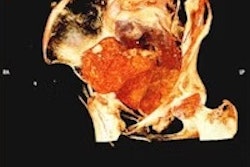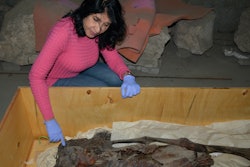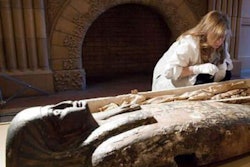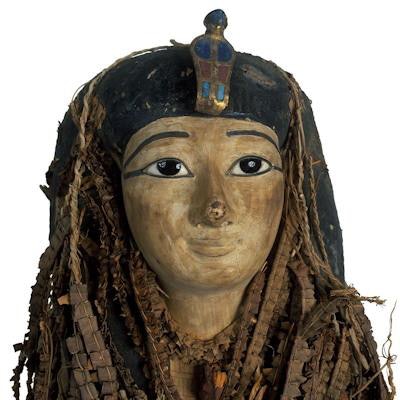
Egyptian researchers have used CT to digitally unwrap the mummy of Pharaoh Amenhotep I, according to a study published December 28 in Frontiers in Medicine.
CT is a valuable tool for this type of anthropological research, wrote Dr. Sahar Saleem of Cairo University and co-author Zahi Hawass, PhD. Saleem is head radiologist for the Egyptian Mummy Project and Hawass is an archeologist, Egyptologist, and twice-over former Minister of State for Antiquities Affairs in Egypt.
"We show that CT imaging can be profitably used in anthropological and archeological studies on mummies, including those from other civilizations," the two investigators said in a statement released by the journal.
Most royal mummies found in the 19th and 20th centuries have been opened and examined, with the exception of Pharaoh Amenhotep I. His mummy was discovered by researchers in 1881 at Deir el-Bahari in southern Egypt and has not been opened in part because of its beauty: The mummy is decorated with flower garlands and includes a face mask set with colorful stones.
Amenhotep was the second pharaoh in Egypt's 18th dynasty and ruled between 1525 B.C. and 1504 B.C. He was 35 years old when he died, measured 5.5 feet, was circumcised, and had good teeth; his mummy was decorated with 30 amulets and a golden girdle studded with gold beads. His was a peaceful reign, and after his death, he and his mother, Ahmose-Nefertari, were worshipped as gods, according to the journal.
Amenhotep's mummy was last opened 3,000 years ago, four centuries after his original burial, and was restored by Egyptian priests to repair damage from grave robbers. Saleem and Hawass found no evidence of disease to explain cause of Amenhotep's death, but they did find mutilations from grave robbers -- who removed his entrails but left his brain and heart intact.
"By digitally unwrapping of the mummy and 'peeling off' its virtual layers -- the [face mask], the bandages, and the mummy itself -- we could study this well-preserved pharaoh in unprecedented detail," Saleem said in the statement.
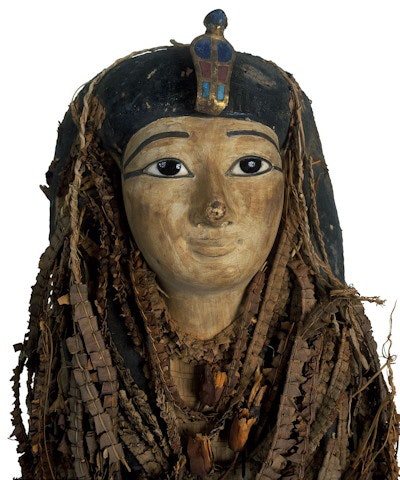 Face mask of the never-before unwrapped mummy of Pharaoh Amenhotep I. Image courtesy of Dr. Sahar Saleem and Zahi Hawass, PhD. Caption courtesy of Frontiers in Medicine.
Face mask of the never-before unwrapped mummy of Pharaoh Amenhotep I. Image courtesy of Dr. Sahar Saleem and Zahi Hawass, PhD. Caption courtesy of Frontiers in Medicine.Saleem and Hawass originally hypothesized that the restorers of the Amenhotep mummy opened it with the intention of reusing royal burial equipment. But that doesn't appear to be the case.
"We show that at least for Amenhotep I, the priests of the 21st dynasty lovingly repaired the injuries inflicted by the tomb robbers, restored his mummy to its former glory, and preserved the magnificent jewelry and amulets in place," she said.
Saleem and Hawass have studied more than 40 royal mummies for the Egyptian Antiquity Ministry Project since it was launched in 2005. Twenty-two of these were installed in a new museum in Cairo in April.
"This fact that Amenhotep I's mummy had never been unwrapped in modern times gave us a unique opportunity, not just to study how he had originally been mummified and buried, but also how he had been treated and reburied twice, centuries after his death, by High Priests of Amun," Saleem said.






